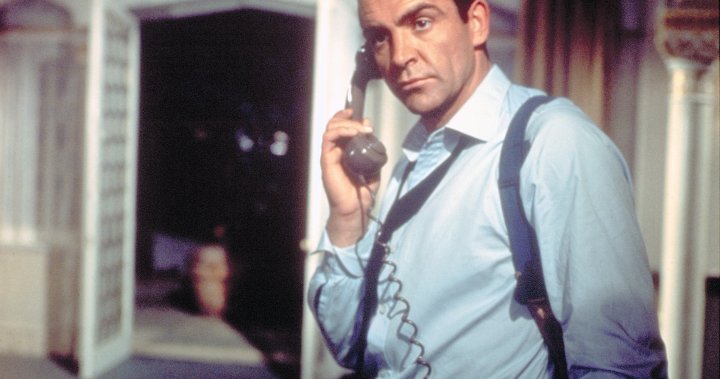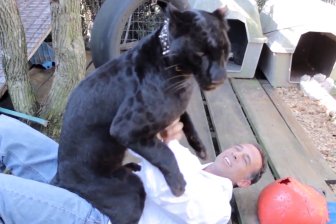Scottish movie legend Sean Connery, who shot to international stardom as the suave, sexy and sophisticated British agent James Bond and went on to grace the silver screen for four decades, has died aged 90.
Eon Productions Ltd., a British film production company that primarily produces the James Bond film series, confirmed his death on Saturday.
The BBC and Sky News were the first to report on Connery’s passing.
“I was heartbroken to learn this morning of the passing of Sir Sean Connery. Our nation today mourns one of her best loved sons,” said Scottish First Minster Nicola Sturgeon. “Sean was a global legend but, first and foremost, he was a patriotic and proud Scot.”
Connery was raised in near poverty in the slums of Edinburgh and worked as a coffin polisher, milkman and lifeguard before his bodybuilding hobby helped launch an acting career that made him one of the world’s biggest stars.
Connery will be remembered first as British agent 007, the character created by novelist Ian Fleming and immortalized by Connery in films starting with ““Dr. No” in 1962.
As Bond, his debonair manner and wry humour in foiling flamboyant villains and cavorting with beautiful women belied a darker, violent edge, and he crafted a depth of character that set the standard for those who followed him in the role.

He would introduce himself in the movies with the signature line, “Bond – James Bond.” But Connery was unhappy being defined by the role and once said he “hated that damned James Bond”.
Tall and handsome, with a throaty voice to match a sometimes crusty personality, Connery played a series of noteworthy roles besides Bond and won an Academy Award for his portrayal of a tough Chicago cop in “”The Untouchables” (1987).
He was 59 when People magazine declared him the “sexiest man alive” in 1989.
Connery was an ardent supporter of Scotland’s independence and had the words “Scotland Forever” tattooed on his arm while serving in the Royal Navy. When he was knighted at the age of 69 by Britain’s Queen Elizabeth in 2000 at Holyrood Palace in Edinburgh, he wore full Scottish dress including the green-and-black plaid kilt of his mother’s MacLeod clan.
Became fed up with ‘idiots’
Some noteworthy non-Bond films included director Alfred Hitchcock’s “Marnie” (1964), “The Wind and the Lion” (1975) with Candice Bergen, director John Huston’s “The Man Who Would be King” (1975) with Michael Caine, director Steven Spielberg’s “Indiana Jones and the Last Crusade” (1989) and the Cold War tale “The Hunt for Red October” (1990).
Fans of alternative cinema will always remember him starring as the “Brutal Exterminator” Zed in John Boorman’s mind-bending fantasy epic “Zardoz” (1974), where a heavily moustachioed Connery spent much of the movie running around in a skimpy red loin-cloth, thigh-high leather boots and a pony tail.
Connery retired from movies after disputes with the director of his final outing, the forgettable “The League of Extraordinary Gentlemen” in 2003.
“I get fed up dealing with idiots,” he said.
The Bond franchise was still going strong more than five decades after Connery started it. The lavishly produced movies, packed with high-tech gadgetry and spectacular effects, broke box office records and grossed hundreds of millions of dollars.
After the smashing success of “Dr. No,” more Bond movies followed for Connery in quick succession: “From Russia with Love” (1963), “”Goldfinger” (1964), “”Thunderball” (1965) and ““You Only Live Twice” (1967).
Connery then grew concerned about being typecast and decided to break away. Australian actor George Lazenby succeeded him as Bond in “”On Her Majesty’s Secret Service” in 1969.
But without Connery it lacked what the public wanted and he was lured back in 1971 for ““Diamonds Are Forever” with temptations that included a slice of the profits, which he said would go to a Scottish educational trust. He insisted it would be his last time as Bond.
Twelve years later, at age 53, Connery was back as 007 in ““Never Say Never Again” (1983), an independent production that enraged his old mentor, producer Albert “Cubby” Broccoli.
Preferred beer to martinis
In a 1983 interview, Connery summed up the ideal Bond film as having “marvellous locations, interesting ambiance, good stories, interesting characters – like a detective story with espionage and exotic settings and nice birds.”
Connery was a very different type from Fleming’s Bond character with his impeccable social background, preferring beer to Bond’s vodka martini cocktails that were “”shaken not stirred”.
But Connery‘s influence helped shape the character in the books as well as the films. He never attempted to disguise his Scottish accent, leading Fleming to give Bond Scottish heritage in the books that were released after Connery‘s debut.

Born Thomas Connery on Aug. 25, 1930, he was the elder of two sons of a long-distance truck driver and a mother who worked as a cleaner. He dropped out of school at age 13 and worked in a variety of menial jobs. At 16, two years after World War Two ended, Connery was drafted into the Royal Navy, and served three years.
““I grew up with no notion of a career, much less acting,” he once said. ““I certainly never have plotted it out. It was all happenstance, really.”
Connery played small parts with theatre repertory companies before graduating to films and television.
It was his part in a 1959 Disney leprechaun movie, “Darby O’Gill and the Little People,” that helped land the role of Bond. Broccoli, a producer of the Bond films, asked his wife to watch Connery in the Disney movie while he was searching for the right leading actor.
Dana Broccoli said her husband told her he was not sure Connery had sex appeal.
“I saw that face and the way he moved and talked and I said: ‘Cubby, he’s fabulous!’” she said. “He was just perfect, he had star material right there.”
Connery married actress Diane Cilento in 1962. Before divorcing 11 years later, they had a son, Jason, who became an actor. He married French artist Micheline Roquebrune, whom he met playing golf, in 1975.
© 2020 Reuters


